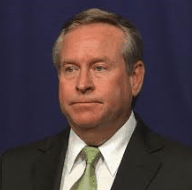
The Western Australian Government late yesterday handed down its State Budget, which contained the following headline numbers:
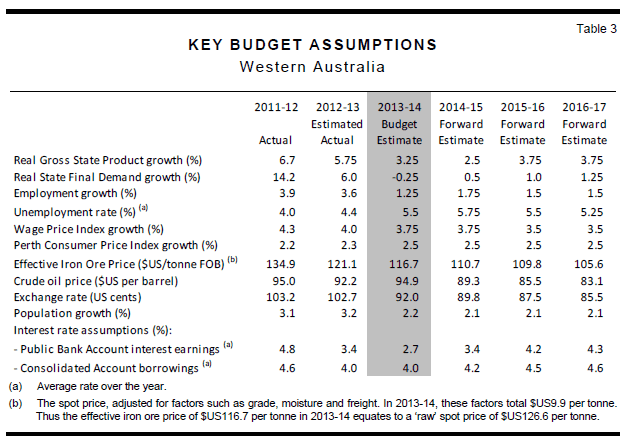
- Western Australia’s economy is forecast to grow by 3.25% in 2013‑14 before falling to 2.5% in 2014-15.
- Western Australia’s unemployment rate is expected to peak at 5.75% in 2014-15, before tapering to 5.25% by 2016-17.
- The iron ore price is expected to continue falling gradually throughout the forecast period.
- A general government operating surplus of $386 million is forecast for 2013‑14, before recording a forecast $147 million deficit in 2014-15, followed by a surplus of $128 million in 2015-16 and $16 million in 2016-17.
- WA’s net debt is forecast to reach $28.4 billion by 2016-17, compared to $3.6 billion in 2007-08.
A few things to note about the headline numbers.
First, Western Australia’s population growth in the year to December 2012 was 3.5%, suggesting growth will be essentially flat or slightly negative when measured on a per capita basis.
Second, the state’s net debt figures beggar belief when one considers that Western Australia has just experienced the biggest commodity boom in the state’s history. Put simply, it should have bucket loads of cash.
Looking at the major revenue lines, payroll taxes are expected to continue rising strongly, which may prove optimistic in light of the impending mining investment slowdown:
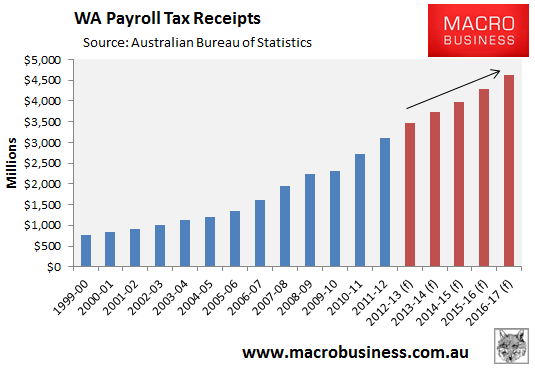
Forecast stamp duty receipts look realistic, with no big boom expected:
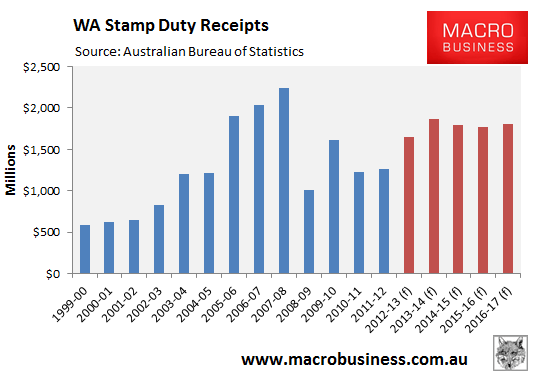
Land tax receipts are forecast to rise significantly, in part due to a 12.5% increase in taxes on investment homes:
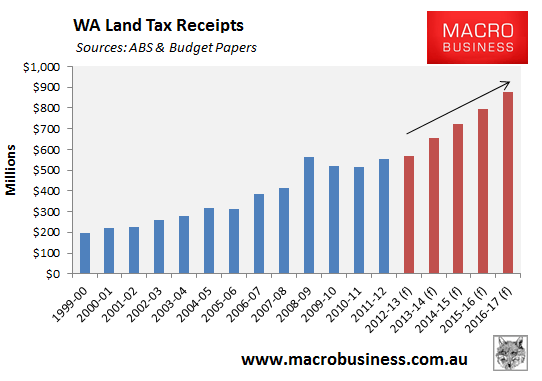
Mining royalties are forecast to increase over the budget period, from $5,824m in 2013-14 to $6,911 in 2016-17, with higher production volumes for the State’s major commodities, a gradually depreciating exchange rate, and the removal of the discounted royalty rate on iron ore ‘fines’ more than offsetting an expected decline in commodity prices.
One particularly encouraging aspect of the Western Australian Budget is that instead of turning austere in order to maintain the surplus, the state is forging ahead with a massive transport and broader infrastructure spend, committing $5.7 billion over four years, which should help support growth and jobs as mining-related capital expenditures decline (see next chart).
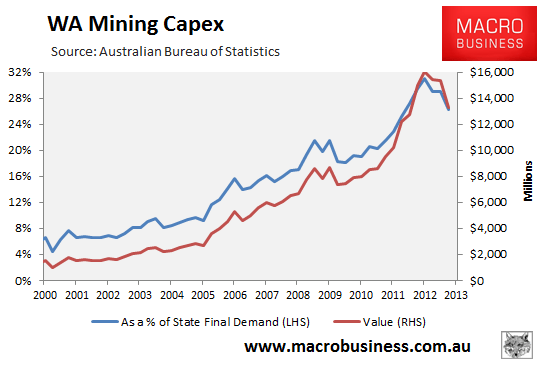
Overall, it looks like a sensible budget that is appropriate for the times.

